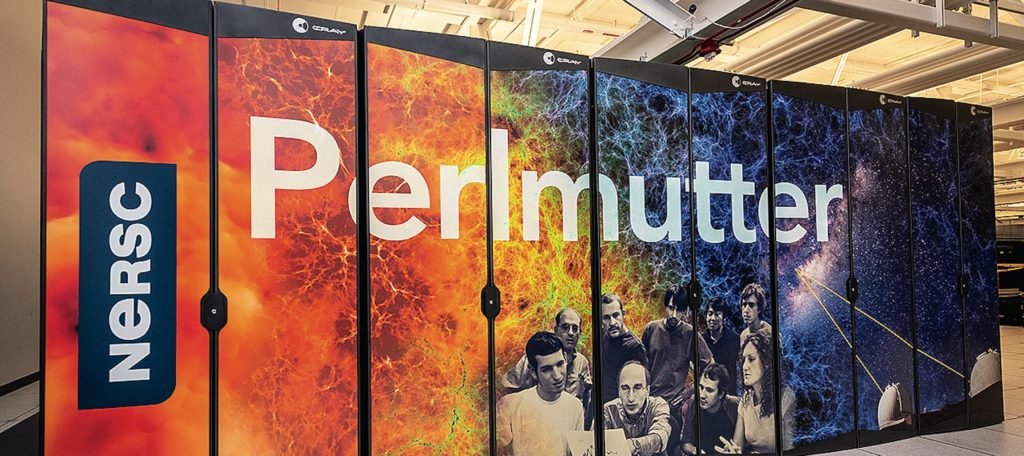In the race to find earth-friendly forms of energy, Lawrence Berkeley National Lab is out in front.
Echoes of “Drill, baby, drill,” may still be reverberating through the hallways on Capitol Hill, but the American electorate made it clear in the last national election that an alternative energy path is in the best interests of the nation. And 3,000 miles to the west, Lawrence Berkeley National Laboratory is on point in that campaign. Former LBNL Director Steven Chu is now U.S. Energy Secretary, and he has outlined a game plan that focuses on renewable energy, essentially transforming the Helios Project—a Lab-based program he founded that promotes solar-based energy sources—from academic initiative to national policy.
And under the aegis of the Lab’s new director, Paul Alivisatos, the drive for earth-friendly energy remains in high gear. Climate change is now recognized as a compelling threat among members of the lay public, not just the scientific community. Green energy is trumpeted as the Next Big Thing, and the dollars are starting to follow the perfervid hype. Federal stimulus funds are flowing to the Lab—as of this writing, more than $220 million has been earmarked, and more may be granted later.
But now it’s crunch time. Berkeley Lab and the other national laboratories involved in alternative energy research are under pressure to produce palpable results, real technology that can both sustain the global economy and mitigate global warming. So how’s it going?
Alivisatos believes significant cuts could be made in carbon emissions within the next few years, given sufficient will to employ developing technologies. “It is estimated that 70 percent of U.S. electricity and 50 percent of natural gas is used in commercial buildings,” Alivisatos wrote in response to an emailed query. “Berkeley Lab scientists believe that 30 to 50 percent of this energy could be saved with reasonable measures.” But more work is needed to develop techniques for carbon sequestration. And as for scalable alternative energy: “Critical technologies may take some years of work before they can make a really large contribution to the energy mix.”
In other words, don’t expect to shuttle to work in a personal gyrocopter fueled by algae-produced biofuel anytime soon. Progress is being made in alternative energy; useful technologies will emerge and ultimately be employed. And in the long run, alternative fuels and power production systems must supplant fossil fuels, because oil and natural gas prices will keep rising as demand increases (particularly from China and India) and availability decreases. Canadian economist Jeff Rubin, who accurately predicted petroleum spikes in 2007 and 2008, says oil’s per-barrel cost will climb to triple digits in the relatively near future and stay there.
Such ruinously expensive petroleum could drive increased calls for the development of coal into liquid fuels. But if that scenario materializes, it will merely hasten dire climate change because it would entail the release of gigatons of carbon into the atmosphere.
Nevertheless, said Miquel Salmeron, the Lab’s Director of Material Sciences, fossil fuels will remain in the world’s energy mix for the foreseeable future simply because no viable alternatives have been developed. “We’ll certainly burn up all the oil and gas, and like it or not, we will use coal,” said Salmeron. Experiments are under way at LBNL and other labs to capture CO2 released during coal’s combustion for later sequestration underground. Still, he said, the global-warming implications of burning coal over the long term “are scary.” And Chu, in a 2007 presentation in Berkeley, called coal his worst nightmare. “We won’t run out of energy,” he said, referring to the vast reserves of easily extractable coal that remain, “but there’s enough carbon in the ground to really cook us.”
So if both the economy and the biosphere are going to squeeze through the approaching bottleneck more or less intact, they’re going to have to do it on energy sources that represent little if any net carbon releases to the atmosphere.
Hydrogen has been touted as the ultimate solution. It is, after all, literally as common as water. By extracting the two atoms of hydrogen that bind with an oxygen atom to form each molecule of water, we could theoretically produce a fuel that could power our cars, heat our homes, and churn out enough electricity to keep a big-screen plasma TV blasting in every bedroom—all with nil release of carbon, because hydrogen produces only water when burned. But, explained Salmeron, further research is needed to develop ecologically clean and economically feasible methods for cracking large quantities of hydrogen from water. Then there is the question of infrastructure: Despite the brave perorations of a coming “hydrogen superhighway” made in some political quarters over the past couple of years, a practical means for storing and moving hydrogen has yet to be conceived. Chances are good it will forever remain a vaporous dream.
So the Lab isn’t expending a lot of calories on schemes emphasizing the direct burning of hydrogen gas. Instead, biofuels are a focus—liquid fuels derived from terrestrial plants, algae, and photo-electrochemical cells (PECs), which are reactors that can produce fuel precursors from sunlight.
One thing, though: By and large, forget ethanol. That’s the view of Jay Keasling, Berkeley Lab’s acting deputy director, who is CEO of the Joint BioEnergy Institute, a partnership comprising Berkeley Lab, Lawrence Livermore National Laboratory, Sandia National Laboratories, and several universities. By now, observed Keasling in an interview at the Lab, it is widely acknowledged that the corn-based ethanol boom is a bust. The quantity of fuel and fertilizer required is high, representing continued spewing of large quantities of carbon into the atmosphere. People don’t like the idea of burning food for fuel, or of extravagant subsidies to corporate farmers. And the conversion of marginal land to corn for ethanol production has led to increased erosion, decreased water quality, and loss of wildlife habitat.
There has been a lot of talk about cellulosic ethanol, Keasling said: using abundant woody plants rather than simple sugar-rich grain crops to produce the fuel. But the processes needed to convert the complex sugars in cellulose and hemicellulose—the fibrous material in woody plants—are both complicated and laborious.
Besides, according to Keasling, ethanol has had its day. “Ethanol still has some applications, specifically as an oxygenate for gasoline,” said Keasling. “But as a fuel, it has a lot of problems. It’s toxic to the yeasts that produce it, so production efficiencies are limited. It’s corrosive, so it can’t be moved through existing pipelines—and we can’t afford to replace our $2 trillion to $3 trillion fuel transport system just to accommodate it. Finally, you can’t use it for diesel or jet fuel.” It’s far better, said Keasling, to produce biofuels that “behave like gasoline and diesel, fuels that are already well integrated with our civilization. So we’re concentrating on several that fit the bill, including butanol, isopentanol, hexadecane, and geranyl decanoate.”
To make cellulosic biofuel on an industrial scale, though, you have to address several issues. First is feedstock. Certain fast-growing trees such as poplar could be appropriate for the northern latitudes, said Keasling, and switchgrass—a cellulose-rich perennial native to North America—could work for more southerly regions. Some genetic engineering will be required to produce strains that grow rapidly.
“The U.S. has roughly 500 million acres of cropland,” said Keasling. “If we use about 25 percent of that for biofuels, we could replace all the gasoline consumed in the country.” That, of course, is a great deal of land, and it implies possible disruptions in other sectors of the economy—food comes to mind. Still, Keasling observed, our wealth of cropland does point a way toward energy independence. Moreover, there could be other benefits. “Many of the candidate feedstocks fix nitrogen in the soil, enriching it,” he said. “That represents significant carbon cuts—about 1 percent of the world’s energy is used to produce nitrogen-based fertilizers.”
But it’s still a long way from a poplar trunk or a hank of switchgrass to a car fuel tank. Extracting from cellulose and hemicellulose requires fungal and bacterial enzymes refined through genetic engineering. In addition, researchers will have to develop microbes to convert the complex sugars to fuel. “We’re making great progress in all these areas, but none of this research is short term,” Keasling said. “Solutions will take 5 to 15 years—we’ll see some sooner than others.”
A similar long timeline also is likely in another field of research being intensely pursued at Berkeley Lab: photovoltaic, or solar cells. The problem isn’t increasing the efficiency of silicon solar cells, said Cyrus Wadia, a postdoctoral researcher at the Lab. Silicon solar cells have been around for 50 years, and by now, after all those decades of research and tweaking, efficiencies stand at a very impressive 22 percent—meaning that about 22 percent of the sunlight that hits the cell is transformed into usable energy. But though silicon, derived from sand, is literally as common as dirt, it is expensive to refine to the degree needed for top-end solar cells. Plus, the industrial processes required for pure silicon can produce quite a bit of atmospheric carbon.
“You have to reduce the material in an arc furnace to break thesilicon/oxygen bond,” said Wadia. “That takes a lot of energy. And while you can make silicon for $1 to $2 a kilogram that is 98 percent pure, that’s still not pure enough for solar cells.”
Semiconductor-grade polysilicon—the kind you need for state-of-the-art photovoltaic cells—can cost as much as $500 a kilogram to produce. That, said Wadia, makes existing photovoltaic technology simply too expensive to be a player in global energy solutions.
Wadia recently took a trip to a village in a mountainous region of China, and the visit haunts him now. Per capita income was about $300 a year. None of the villagers had electricity—and they thus represent, said Wadia, about 20 percent of the world’s population. The citizens of this remote settlement yearn for electricity to power a refrigerator, to illuminate a light bulb, to run a small water pump. These are modest things, Wadia observed, but immensely transformative to daily life. And one way or another, he said, the people in this mountain village will get their electricity.
If photovoltaics are to have a chance of supplying that power, they have to get much cheaper—down to about 5 cents from the current levels of about 30 cents a kilowatt hour. Otherwise, China’s rural poor will obtain their electricity through the accelerated burning of the country’s immense coal reserves, greatly compounding the threat to the planet’s habitability. Currently, it costs about $8 a watt to install photovoltaic cells in the United States. That price, said Wadia, has to come down to 75 cents a watt to enable delivery of solar power to the world’s electrically disenfranchised. Silicon, in other words, isn’t the answer—its embedded costs are too high.
Another line of photovoltaic inquiry—so-called thin cells, which employ exotic metals that include cadmium, tellurium, indium, and gallium—is promising because these cells use less material, can be “printed” on plastic or foil, and unlike silicon cells are highly flexible.
Efficiencies for thin cells are climbing. Cadmium/tellurium (CdTe) cells now stand at 11 percent, and copper/indium/gallium/selenide cells are at 13 percent. In the best case, thin cells ultimately might get down to $2 a watt, said Wadia—still too high for the villagers. Plus, the metals required for thin cells aren’t just exotic: They’re rare. In the simplest terms, it won’t be possible to mine sufficient quantities of them to meet global energy demand through standard thin-cell technology. “If we used all the tellurium produced in the world each year for CdTe cells operating at their theoretical maximum efficiencies, then we would fall two orders of magnitude short of U.S. annual electricity demand,” Wadia observed.
Wadia believes photovoltaics can still contribute significantly to the world’s energy mix—they simply have to be made of elements other than those currently in vogue. What is needed are abundant, efficient materials that can meet the metrics of both cost and scalability. Wadia has a particular compound in mind: iron sulfide. He acknowledges, however, that it won’t displace silicon photovoltaic cells on suburban home roofs anytime soon.
While decades of research have produced silicon and thin-cell photovolaics with high efficiencies, scientists have been unable to refine iron to the requisite degree. For solar cells to work, the matrix material has to be pure enough to form abundant “pathways” for the flowing electrons of usable energy; contaminants block these conduits. But now, 25 years later, a means has emerged to deal with that problem, said Wadia: nanotechnology, the science of manipulating materials on the molecular level.
“Nanotechnology means you can get more energy [out of solar cell materials] because you can engineer them precisely to the solar spectrum.” he said. “They also allow us to minimize impurities simply because we’re working on such a small scale. Materials composed of iron sulfide nanoparticles mixed with polymers are looking extremely promising.”
Indeed, said Arunava Majumdar, director of LBNL’s Environmental Energy Technologies Division, nanotechnology is embedded in several fields of energy research, not just photovoltaics. The Solar Energy Research Center—a subsidiary initiative of the Helios Project—is relying on nanotech to develop and produce photo-electrochemical (PEC) cells, devices that employ an artificial photosynthetic process to split hydrogen from water, and then bind the hydrogen atoms to each other and to carbon atoms, creating carbohydrates and hydrocarbons—biofuel precursors.
In addition, said Majumdar, nanotechology holds the promise of making batteries reliable and powerful enough to make a national fleet of electric cars a reality. Current research focuses on rechargeable lithium-ion batteries. There are still plenty of bugs to work out, including some relating to safety, charge repeatability, and energy density. Lithium supplies could be a problem, just as for some of the metals needed in thin-cell photovoltaics. Exploitable deposits are rare, and they may not always be easily accessible to the United States. Bolivia has about half the world’s lithium reserves; Chile and China account for most of the rest.
Still, Majumdar remains moderately optimistic about the long-term prospects of batteries. “We’re still testing the limits,” he said, “but theoretically, we could achieve performances comparable to gas engines.”
Nanotech may even help reconcile the oxymoron “clean coal.” Berkeley Lab researchers are now investigating the use of nanoparticles as a binding agent for CO2 captured from the combustion gases produced by burning high-carbon fuels. Once the nanoparticles are laden with CO2, Majumdar said, they can be heated, releasing the CO2 for injection—and isolation—underground.
Although PECs and new-wave photovoltaic cells deservedly capture the high ground of the imagination, Majumdar emphasized the necessity of first picking the “lowest hanging fruit.” By that he means enforcing a diet on the energy-hungry buildings alluded to by Alivisatos. Buildings are energy hogs, Majumdar observed, and tremendous benefits can be realized by redesigning them.
“Buildings are the Hummers of the energy landscape,” he said. “The Lab supports a national goal of reducing building energy consumption by 80 percent in new buildings and 50 percent in existing buildings by 2030. That alone would allow us to eliminate one-half of all coal-fired plants.” This could be achieved through energy-saving devices such as LED lighting, heating and cooling systems that employ the ground or lakes as heat sinks, photosensitive windows that shade themselves in response to sunlight, and walls converted to thermal storage units with special paint.
But even this low-hanging fruit won’t be picked tomorrow, Majumdar acknowledged; the Lab is still in the process of drafting a smart building initiative for eventual funding and staffing. Certainly a highly intelligent edifice that is abstemious in its energy consumption can be designed and built right now. But as with biofuels, photovoltaics, and carbon sequestration, the devilish details have yet to be thrashed out. That will take a great deal of money and years of endeavor to accomplish.
Even in the most optimistic scenario, then, the future that is unfolding will demand a global commitment to conservation and a stiff upper lip. All the dramatic work underway at Berkeley Lab won’t change a basic fact: Energy will never again be cheap enough to squander.
“It is entirely possible—even likely—we’ll be able to produce biofuels economically,” mused Jay Keasling, speaking of his particular métier. “That doesn’t mean they’ll be inexpensive.”





















